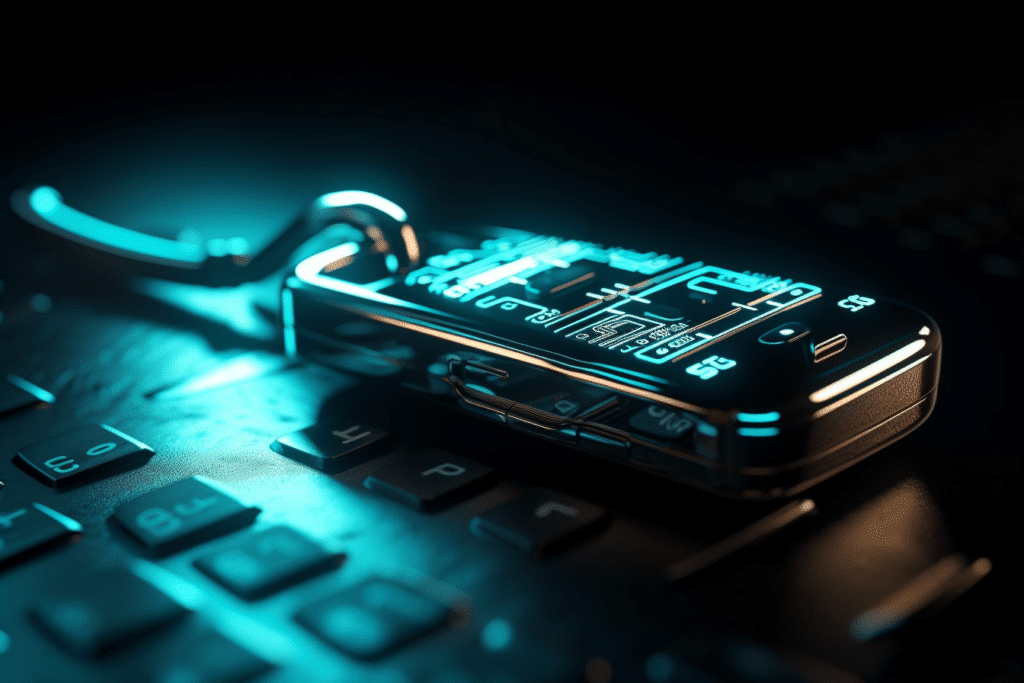Crypto has grown dramatically in recent years, both with individuals and businesses.
Unfortunately, cases of hacking, theft or fraud are constantly occurring.
Several notable events have highlighted the importance of cryptocurrency security:
In 2014, the exchange platform Mt. Gox suffered a massive hack resulting in the loss of millions of dollars in digital assets for the platform’s users.
In 2016, it was Bitfinex that suffered a similar attack, resulting in the loss of over $60 million in digital assets.
Recently, in the fall of 2022, we had the FTX case that brought back the famous phrase “Not your keys Not your coins”.
These events have highlighted the risks that users may encounter when storing their crypto on third-party platforms.
In addition, there are also cases of individual wallets being stolen due to the vulnerability of their own devices or their own lack of security.
In 2020, one cryptocurrency user lost more than $400,000 due to malware installed on their computer.
So crypto security is an issue. The security risks are real and can have significant financial consequences.
It is important to understand that crypto wallet are not designed to store assets, as these are stored on the corresponding crypto blockchain.
In this article, we will explore all the security measures you can take to secure your crypto and reduce the risks.
Securing your crypto wallet by wallet type
1/ Crypto custodial wallet VS non-custodial wallet
Wallet custodial
Here, a third party (also called custodian) is responsible for storing the digital assets on behalf of the user.
Custodians are typically regulated entities that provide crypto custody services to institutional or individual clients.
The best known today are the centralized exchanges (Binance, Kraken, Coinbase …)

They are often used to store large amounts of crypto, as they offer increased security over individual wallets.
They can provide physical and logical security for digital assets, as well as insurance against loss or theft.
Logical security is provided by advanced security protocols, such as two-step verification and identity management to protect accounts from hacker attacks or operator error.
When a user wants to access their funds stored in a custodial portfolio, they typically have to go through a rigorous verification process, such as identity verification and authorization validation.
Users may also be subject to withdrawal limits to protect against financial loss.
Security issues related to the crypto custodial wallet
Custodian risks: users must trust the custodian to store their digital assets securely. If the custodian suffers a security breach or negligence, users’ digital assets can be compromised.
Third-party risks: Custodians may also work with third parties to provide services (hosting, archiving), such as private key management and system maintenance. If these third parties are compromised, it can also put the security of digital assets at risk.
User Error Risks: Users can make mistakes, such as losing passwords or disclosing credentials, that can jeopardize the security of their digital assets.
Risks from hacker attacks: hackers may attempt to hack into the security systems of custodial wallets to gain access to stored digital assets.
Risks related to fraudulent activity: custodians may be targeted by fraudsters attempting to gain unauthorized access to digital assets stored in custodial portfolios.

Non-custodial wallet
Here, the user has full control over their digital assets. There is no third party involved, which means that the user is responsible for the security of their funds.
They are popular for those looking to maximize their anonymity and privacy, as they do not need to provide personal information to create a wallet.
They are often based on decentralized blockchain technologies, such as Bitcoin, Ethereum and other cryptocurrencies.
These wallets are available as mobile applications, desktop software or hardware wallets.
When a user creates a non-custodial wallet, they generate a unique private key that gives them full control over their digital assets.
? The private key is a security code that must be kept safe, as it is used to interact with the funds stored in the wallet.
It is important to remember that if you lose your private key or if it is compromised, you lose your crypto forever.
Users should be aware of the risks associated with fraudulent transactions, such as phishing attacks and fake websites that attempt to trick users into divulging their private key or personal information.
What is a key?
The “keys” of a crypto wallet are digital codes used to access stored digital assets.
Think of it as a kind of password or PIN code.
Two types of keys exist: private keys and public keys.
Private keys are secret digital codes that give users exclusive access to their digital assets.
Public keys are digital codes that identify the user’s wallet and allow access to it, but do not allow interaction with the digital assets.
Why use a key? To sign transactions and prove ownership of stored digital assets.
They are very important, as they are used to release funds stored in the portfolio.
If a user loses their private key, they can no longer access the funds stored in the wallet and they are considered lost
It is important to keep your private key safe to avoid the risk of hacking or theft.

The concept of seed phrase
Also known as a “recovery phrase,” the seed phrase is a randomly generated set of words, usually 12, 18 or 24, that can be used to recover a lost or damaged private key from a cryptocurrency wallet.
The seed phrase is also called the “recovery mnemonic” or “backup phrase”.
When a user creates a new crypto wallet, the wallet generates a private key and a seed phrase.
If a user loses their private key or their device is damaged, they can recover their digital assets by entering the seed phrase into a new wallet.
Different types of crypto wallets
Using the right type of crypto wallet plays a crucial role in the security of a user’s digital assets. To optimize security, it is important to understand the different types of portfolios available and choose the one that best suits your needs.
The paper waller
A paper wallet is a way to store your digital assets on a physical medium, usually in the form of a sheet of paper containing the information needed to access your funds.
Unlike online wallets or wallets on a device, it is an “offline” way to store your private keys.
How to create it? Users generate a pair of private and public keys, which they print on a physical medium such as paper.
Users can then transfer their digital assets to their paper wallet using the public address of their wallet.
Although paper crypto wallets are considered extremely secure because they are “offline”, they can be lost or damaged and are not as convenient as online digital wallets.
The digital portfolio
A digital wallet stores the private key locally on the device, encrypted by the chosen password.
They are often convenient and easy to use, but can be vulnerable to security risks related to private key management.
The best known are MetaMask and TrustWallet, their main advantage is the ease in interactions between crypto-currencies and your wallet.
The online wallet
The online crypto wallet allows to interact with the database of the service provider (Binance, Kraken …). Its main advantage is the ease of use, but it is still subject to hacking from the gatekeeper’s platform. Private keys are in the possession of the custodian only.
The use of this type of wallet nevertheless implies an identity verification (KYC: Know Your Customer) and consequently an end to anonymity.
The physical wallet.
Also called the “hardware wallet”, this wallet is an electronic device dedicated to the storage of private keys.
Hardware wallets are considered very secure because, the private keys are stored offline on the device and can only be accessed by the physical user of the device.
They are often equipped with advanced security features, such as password protection and firmware integrity checking. They are more expensive than other types of portfolios.
The best known physical wallets are Ledger and Trezor, the main advantage is the security, since it will require manual and physical validation actions during transactions.
Hybrid portfolio
In concrete terms, it is a physical wallet associated with a digital wallet (or “hybrid wallet” in English).
This solution combines the advantages of physical and digital wallets. They allow users to securely store their private keys on a dedicated electronic device (physical wallet), while offering the convenience of a digital wallet for everyday transactions.
Discover our article on our FAQ to link your physical wallet to a digital wallet (Metamask).
Type of wallet | Benefits | Disadvantages |
Paper | – Offline storage private key without internet connection | – Risk of loss/damage to physical media |
Digital | – Practical and easy to use | – Private keys stored on the device connected to the wallet, security risks |
On line | – Practical and easy to use | – 0 anonymity |
Physics | – Offline private key, without internet connection | – Costly |
Hybrid | – Offline private key, electro device. dedicated (physical portfolio) | – Costly |
Keep your keys to protect your crypto wallet ?
Here are five common options for saving a recovery phrase
Local backup
Users can store their recovery phrase locally on their device, preferably encrypted. This option may be vulnerable to malware attacks.
Online backup
Users can store their recovery phrase in an online password database such as Bitwarden, Dashlane. This option offers increased convenience and accessibility, but can be vulnerable to online security risks.
Paper
Users can write their recovery phrase on a piece of paper and keep it in a safe place (personal safe/banks, notaries, trusted third party). This option may offer increased security, but may be vulnerable to loss or physical damage (fire, flood …) as well as theft.
Physical Support
Users can store their recovery phrase on dedicated physical media, such as a Cryptosteel, Cryptotag or Billfodl. This option provides added security against physical damage, but does not prevent the risk of loss or theft.
Secure USB key
Users can store their recovery phrase on a secure USB flash drive, such as the Corsair or Apricorn flash drives, or secure a standard flash drive with utilities (Bitlocker …). This option offers increased security against theft by setting a password to access the contents, but does not avoid the risk of loss.

Galeon’s opinion ✅
Hardware crypto-currency wallets are generally considered the most secure.
Private keys are stored offline on the device, making them less vulnerable to being hacked by the device in use.
Hardware portfolios are equipped with advanced security features, such as password protection and firmware integrity checking, making them difficult to compromise. Also, they are convenient for everyday transactions, as they can be connected to a computer or smartphone to allow for secure crypto-currency transfers.
Do your own research before investing in a cryptocurrency or blockchain project. Look for information about the team members, their experience and work history. Be wary of investment offers that seem too good to be true. Promises of high returns in a short period of time are often a sign of a scam.
Never share the recovery phrase with others. The recovery phrase is the key to your digital assets and should be protected as such.
Before storing the recovery phrase, test it to make sure it works properly. If the recovery phrase is incorrect or incomplete, you may lose access to your digital assets.
Regularly check the integrity of the media used. If you use multiple storage media, make sure the backups are consistent and up-to-date.
Use multiple storage locations: For added security, store the recovery phrase on multiple identical storage media. The support can be entrusted to a third party in addition to a support at your home for example.
By following these security practices, you can avoid losing your recovery phrase and keep your digital assets safe. It’s important to take the time to consider which storage method is best for your situation and take steps to protect your recovery phrase accordingly.




0 comments